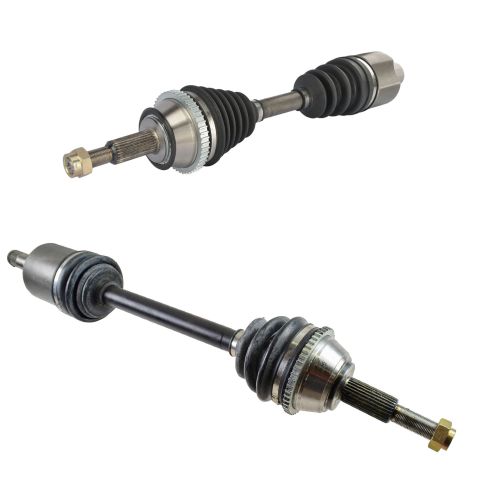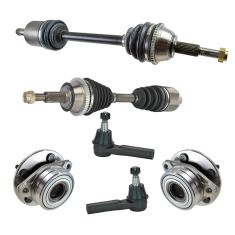1AACS00140-Ford Lincoln Mercury Front Driver & Passenger Side 2 Piece CV Axle Assembly Set TRQ CSA82510

Replaces
2003 Mercury Sable Front Driver & Passenger Side 2 Piece CV Axle Assembly Set TRQ CSA82510

Product Reviews
Loading reviews
4.80/ 5.0
5
5 reviews
fast
January 8, 2019
My parts came very fast and was the right parts that is great. Great people to work with and will use again for all my auto needs.
CV Axle
June 26, 2019
I felt confident that I would receive the correct part to fit my vehicle due to the additional steps to verify Vin number codes for my car. Everything fit as needed.
I also chose to purchase from 1A Auto because the installation videos are so helpful.
CV axles 2001 Taurus
January 9, 2020
1aauto was great to work with. The website helped me identify the correct parts to replace on my car. The parts arrived sooner than expected which was a great help. When I inboxed the parts I notice a slight difference when comparing to the OEM part which was to be expected. (New CV a les had the ring for ABS). I called before installation to ensue proper fit and they confirmed on the phone the parts were correct. Install when great and problem was fixed. Great experience with 1aauto.com.
Perfect fit
November 30, 2020
Parts came neatly wrapped and following the online video they couldnt be easier to install. An easy do it yourself repair that saves hundreds of dollars rather than going to a shop. I should have replaced the struts at the same time to make life easier on myself later, but thats on me.
CV Axles
October 22, 2021
I bought the wheel hub for the Mercury with these, figured why not replace these too. They fit just fine. The warranty is a plus
Customer Q&A
No questions have been asked about this item.
Mercury is a registered trademark of Ford Motor Company. 1A Auto is not affiliated with or sponsored by Mercury or Ford Motor Company.
See all trademarks.










